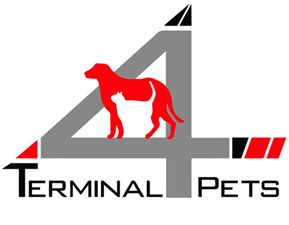Whether you are relocating with a dog or vacationing with a cat, moving pets overseas has been Terminal4Pets specialty for more than two decades. Flying with dogs and flying with cats requires knowledge and precision with international health and airline regulations.
How to fly with your pet safely and comfortably? The Terminal4Pets experts offer guidance and assistance with professional pet travel tips.
Documents and Health Requirements to transport animals internationally:
Each country has its own requirements for animal import. The most important part of planning a relocation with pets is to determine what these requirements are for your specific destination and for your type of pet.
For the majority of pets, the first place to start will be with a microchip and rabies vaccination. Be aware that health requirements for your destination country may also include a rabies titer blood test, deworming, and/or a waiting period of one to six months. Some countries will require additional tests. Fulfilling all health requirements may take several months so start preparations well in advance.
A health check with your veterinarian and a signed export health certificate, endorsed by an authorized government veterinary authority, is required prior to flight. There may be additional documents required, such as an import permit, depending on your destination and your individual pet.
Flight Planning for a pet:
The first step in choosing the best flight for your pet is to check the pet policy of the airline. It is important to provide the airline with all relevant information regarding your pet prior to booking your flight. You will need to provide your pets species, breed, age, size and weight to ensure that they are properly confirmed on the flight and are suitable for airline regulations and the type of aircraft.
There are several different types of flights with pets. With many airlines, smaller pets (generally under 8kg including the carrier) may be allowed to fly in the cabin with the passenger. Larger pets will fly as excess baggage on the passenger’s ticket but will fly in the hold of the plane in a special area that is air pressurized and temperature controlled. For unaccompanied pets or for import to countries that require flight as cargo, there are manifested cargo shipments for pets. The process of booking and shipment is different but your pet will physically travel the same way as excess baggage.
Flight Kennels for international travel with pets:
When flying with a pet it is required that they have an airline and IATA (International Air Transport Association) approved kennel according to international pet welfare standards and practices. It must also follow approved standards in sizing and preparation. As this kennel will be your pet’s home for the entirety of their travels, it is important to purchase the correct kennel for your travel plans and for your pet. Animal welfare and airline regulations mandate that your pet must have enough space to sit, stand, and comfortably turn around in their kennel. For soft carriers, that your pet fits comfortably in their carrier under your seat.
Be sure to prepare your kennel with proper identification and contact details. Close it securely with additional ties prior to flight as an extra safety measure.
Buy your kennel in advance in order to give your pet time to acclimate to being in a small enclosed space. This will help them feel relaxed and safe in a place that is familiar to them during the flight.
Veterinary Advice for international travel with a dog or cat:
Many pet owners tend to think that it is in their pet’s best interest to sedate them before the long drive or a flight but that is an urban myth according to Dr. Kreiner: “Every time a pet is sedated it is exposed to a medical risk and that is why we, the veterinarian community, perform anesthesia only when it’s mandatory when performing an invasive procedure or when a pet experiences sever pain after an accident, a surgery etc.”
According to Dr. Kreiner the low oxygen level and dry air inside the aircraft reduces blood circulation and may increase hypothermia, dizziness, stomach ache and more diverse side-effects. In that case, drugs are most likely to worsen the condition and may even create a threat. This is the reason that many airline policies prohibit sedating pets for flight.
It is advised to refrain from feeding your pet before the long drive or flight but to provide them plenty of water before and during the journey in order to prevent your pet from feeling unsettled.
Preparation time required to fly pets abroad:
Terminal4Pets pet transportation specialists recommend that you plan ahead! It can take up to six months to prepare all health requirements and documents for your pets entry to your destination country. Each pet and each flight is different. Now is the time to start if you are considering traveling with your pet.

